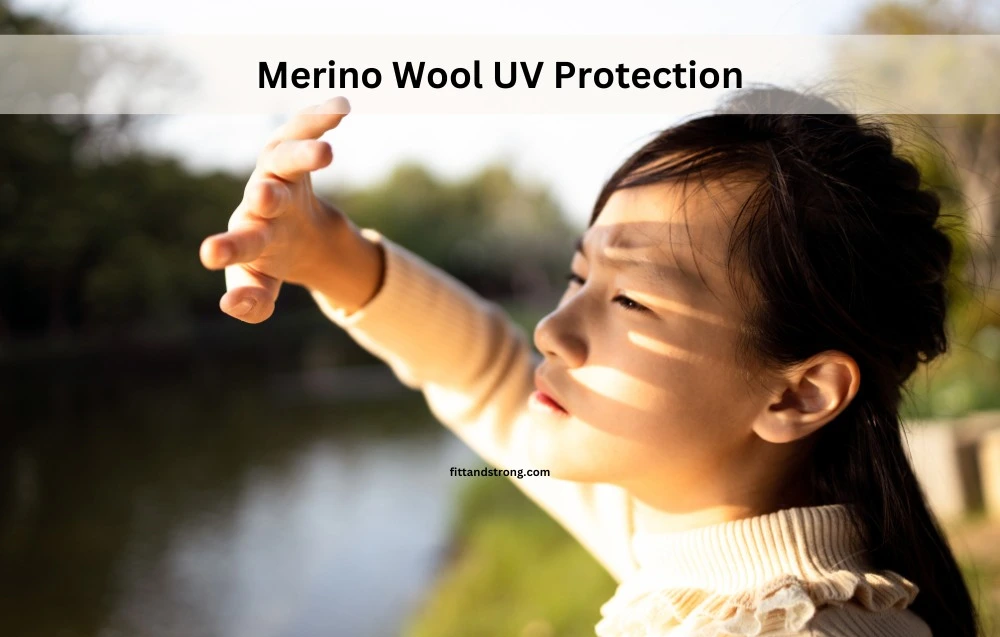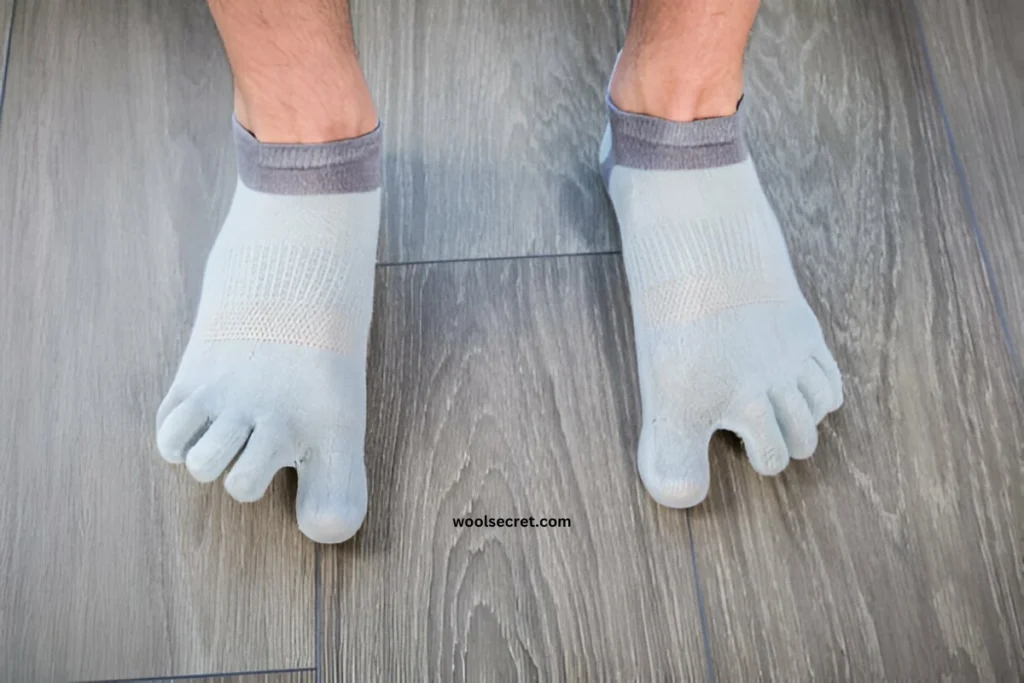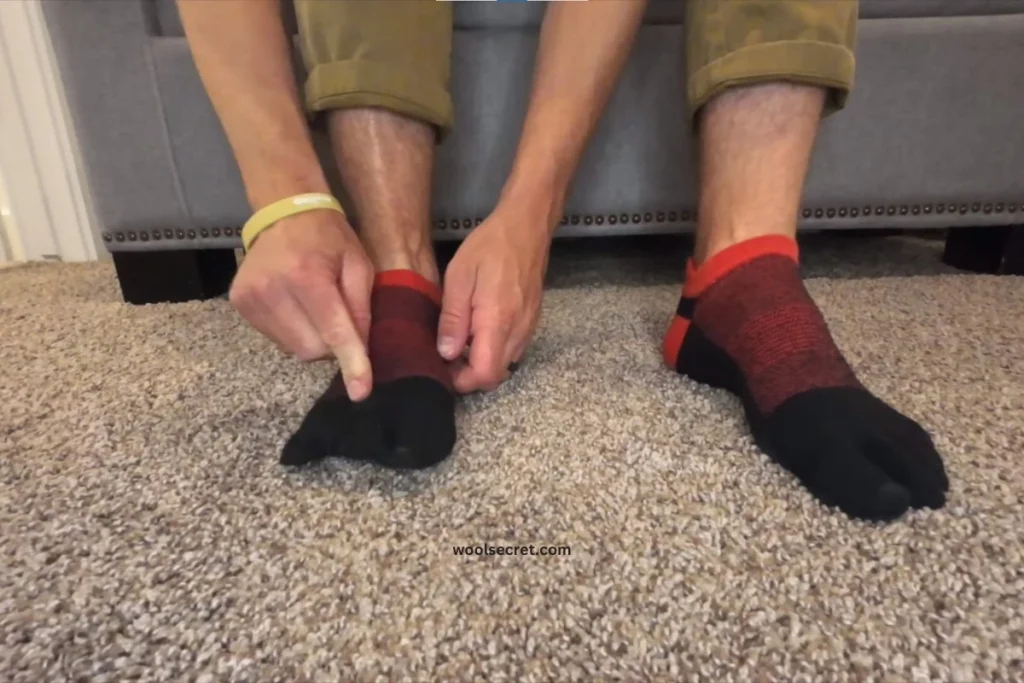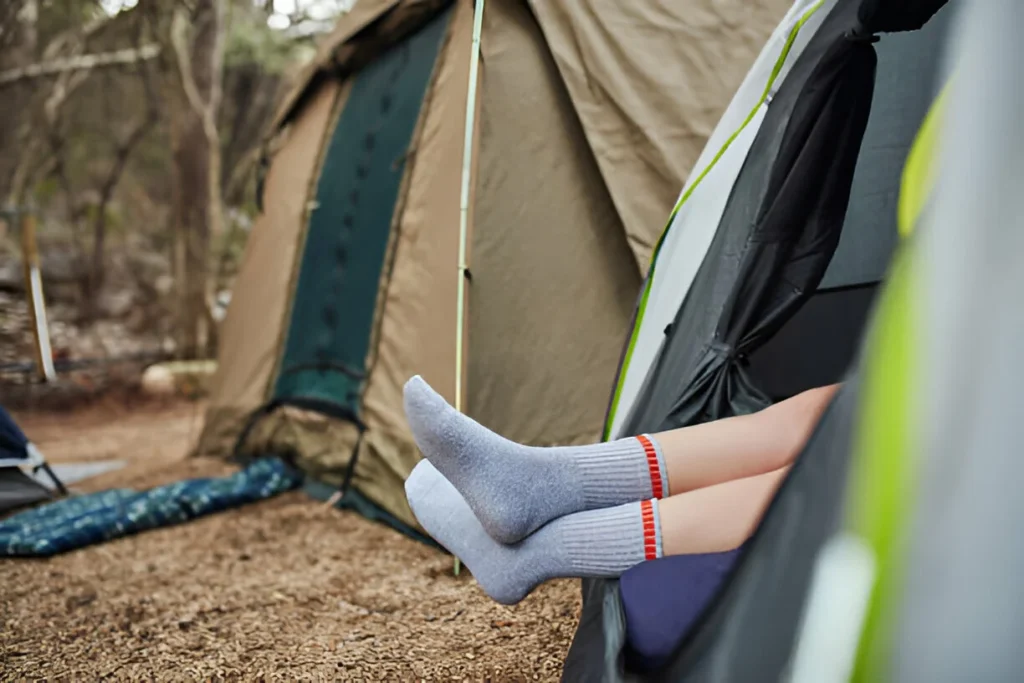Yes, Merino wool is excellent for summer. It acts as a natural UV barrier, protecting the skin from harmful ultraviolet radiation. More breathable than many fabrics, it efficiently absorbs and evaporates moisture, keeping you cool and dry even on hot days. Additionally, its natural odor-resistance is a significant benefit, helping you stay fresh throughout the day.
Merino wool in summer sounds counterintuitive, right? Yet, here I am, feeling breezy and cool, even as the mercury rises. Merino Wool isn’t your Average Virgin Wool. Merino’s unique properties make it a top pick for anyone from hikers to fashion-forward individuals. But why choose Merino over cotton or synthetics for summer?
As a frequent traveler and an outdoor enthusiast, I constantly search for the best wearables that keep me comfortable, no matter the climate. From city strolls to mountain hikes, my go-to fabric has surprisingly been Merino wool.
Are you skeptical about is merino wool good for summer? Let’s debunk a common myth: Merino wool isn’t just for chilly winters! It’s a superhero in the sweltering heat, too. Wondering how? Stick around as we dive into the refreshing truths of merino wool for summer wear.
Is Merino Wool Good for Extreme Summer: Unveiling the Truth

Just like Merino Wool Reigns Supreme in The Winter, it’s also perfectly good and suitable for hot and humid summer weather. However, for summer, it’s recommended to opt for a blend rather than pure Merino wool. These blends should include fabrics like Tencel, lyocell, etc, with Merino wool comprising about 40% or less of the fabric.
A GSM (grams per square meter) of around 120 to 180 is typically considered best for these conditions. This blend ensures the fabric remains lightweight and breathable, making it ideal for staying comfortable even in warmer climates.
Keeping this in mind, popular Merino Wool brands Like Smartwool, Icebreaker, Unbound Merino, and Ridge Merino creatively use Merino wool to specially craft clothing for the summer season. These clothes are suitable for both casual wear and outdoor activities, offering high-quality, sustainability, and comfort.
But Merino wool isn’t just for blending; it has the ability to be an all-season wear fabric, distinguishing itself as a versatile fabric. I wear Merino attire daily, and I’ve been using the same Merino Wool Warm-Weather Socks for the past 11 months. They are still in perfect condition and look set to continue through this summer too.
However, it’s not guaranteed that this will be the perfect choice for everyone. Factors like humidity levels, personal heat sensitivity, or individual preferences and specific conditions might make it less ideal for some, although I haven’t personally seen this happen yet.
How Merino Wool Outperforms Other Fabrics in UV Protection: Research
As a lover of outdoor adventures, I’ve always been curious about the best fabrics for beating the summer heat and protecting my skin. Recently, I stumbled upon some fascinating Research about Protection against ultraviolet radiation in summer clothing.
What really caught my eye was its superb UV protection. Unlike typical summer fabrics like cotton or nylon, which struggle to block harmful UV rays effectively, Merino wool is a powerhouse, absorbing UV light across the spectrum.

While exploring apparel textiles from the spring/summer collections of 2000 and 2001, researchers investigated how fabrics like wool (merino) provided superior UV protection. They measured UV protection factors (UPF) to ensure compliance with the European standard.
Wool’s (merino) ability to block UV radiation is linked to its unique fibers. These fibers absorb harmful radiation across the UV spectrum, unlike other fabrics which are poor absorbers.
In various tests, wool consistently achieved UPF ratings of 30+, a threshold recommended by the European standard for effective UV protection. This makes it a top choice for sun-aware consumers.
11 Compelling Reasons Why Merino Wool is Perfect for Summer
Merino wool is perfect for wearing in the summer because of these 11 reasons:
- Keeps you cool by allowing air to circulate.
- Absorbs and evaporates sweat quickly.
- Adjusts to body temperature to keep you comfortable.
- Naturally prevents the buildup of odor-causing bacteria.
- Offers natural protection from harmful ultraviolet rays.
- Fine fibers make it soft and non-irritating.
- Ideal for summer wear due to its light feel.
- Stays smooth, making it perfect for travel.
- Dries faster than many other fibers.
- Renewable and more eco-friendly than synthetic alternatives.
- Suitable for various clothing options, from sportswear to casual.
These reasons and Benefits Make Merino Wool the ideal choice for versatile, eco-friendly, and comfortable summer clothing options.
What Are the Disadvantages of Merino Wool in Summer
While I love the versatility of Merino wool for cooler conditions, it’s fair to say that the Challenges and Downsides of Merino Wool make it not perfect for every summer scenario. Let’s be real about a few things:

- Cost: First off, Merino wool can be pretty pricey. When you’re outfitting for summer on a budget, this can definitely be a sticking point. You might find yourself wondering if the benefits justify the higher price compared to materials like cotton or polyester.
- Care Requirements: Here’s the deal—Merino wool needs a bit more TLC in the laundry department. It’s not just toss and go like your typical synthetic blend. You’ve got to be mindful of washing it gently and avoiding the dryer to keep it in top shape.
- Durability in Rough Conditions: For all its wonders, Merino wool isn’t the toughest kid on the block when it comes to abrasion resistance. If you’re into rough-and-tumble activities, you might find it wears through quicker than more rugged materials.
- Heat Retention: Although Merino wool is a champ at temperature regulation, there are days during the summer when it might just feel a bit too warm, especially under the blazing sun in humid conditions.
- Allergies: Oddly enough, even though it’s super soft, some folks might find they’re a bit sensitive to natural fibers like wool, which can be a downside if you’re one of the unlucky few.
- Moisture Sensitivity: Sure, Merino wool wicks moisture like a pro, but in a serious downpour? It might soak up more than its fair share and get heavier than synthetic options that shed water more readily.
Navigating these quirks is all part of figuring out what works best for your lifestyle and your wardrobe. Is Merino wool still a go-to for me? Especially for those breezy summer evenings and unpredictable weather days. But knowing its limitations helps me pick the right moment to wear it or opt for something else.
What Types of Merino Wool Attire Can You Wear in the Summertime?
During summertime, I find Merino wool perfect for staying cool and dry. It’s great for T-shirts, shorts, and socks, which are breathable and moisture-wicking. Even lightweight hoodies and jackets are comfy on cooler evenings or during unexpected rain showers.
Here’s Merino wool clothing and accessories for staying cool and fresh in summer:
T-Shirts
Merino wool T-shirts are a game changer in the summer. They’re not just for keeping you warm; they actually help cool you off! The breathability and moisture-wicking properties keep you dry and comfortable, even on the hottest days. I never hit a summer festival without one.
Buff
A Merino wool buff is an incredibly versatile accessory for the summertime. Perfect for outdoor enthusiasts, it offers protection against the sun while keeping you cool. Its moisture-wicking abilities ensure that whether you’re hiking or cycling, you stay dry and comfortable.
Shorts
Imagine shorts that can do more than just cover you up. Merino wool shorts offer that perfect balance of comfort and durability. They are light, yet resilient enough to handle any summer adventure. Plus, they dry super fast if you decide to splash through a creek!
Base Layers
Even in summer, those cooler evenings by the campfire call for a good base layer. Merino wool base layers are excellent at temperature regulation, keeping you just the right amount of warm without overheating. It’s like your personal climate control!
Socks
Don’t forget about your feet! Merino wool Toe Socks are Essential, especially if you’re hiking or walking a lot. They protect against blisters and manage foot moisture so effectively that I walked five miles in them last July without a single complaint.
Top
A Merino wool top is versatile enough to go from a casual meet-up with friends to an impromptu hike in the woods. The fabric’s elasticity ensures it moves with you, making it my go-to for any spontaneous summer plans.
Hoodie
A lightweight Merino wool hoodie can be the perfect companion for those breezy summer nights. It’s soft, cozy, and keeps the evening chill at bay while you enjoy some late-night stargazing or a beach bonfire.
Jacket
While it might sound counterintuitive, a thin Merino wool jacket is fantastic for summer rains. It offers a layer of warmth and protection without trapping heat, making it ideal for unpredictable summer weather. The last time I was caught in a summer shower, my Merino jacket was my hero.
What Unique Hot Climate Properties Make Merino Wool Stand Out from Other Summer Fabrics
Merino Wool has Unique Qualities that really stand out compared to other summer fabrics like Seersucker, Chambray, Bamboo, Rayon, Cotton, and Linen, which can’t match Merino in some aspects.
With several key properties like UV protection, moisture management, and its ability to keep you cool, Merino wool is a top choice for staying comfortable and relaxed when it gets hot.
These Properties make Merino wool a premium option during the sunny season:
Superior Moisture Absorption
One of the most remarkable features of Merino wool is its ability to manage moisture effectively. Unlike cotton, which tends to absorb moisture and feel damp, Merino wool can absorb moisture vapor and still feel dry to the touch. This is crucial during my summer hiking trips where staying dry is essential to comfort.
Merino controls odor and doesn’t smell
I’ve noticed that Merino wool naturally resists odors, thanks to its antibacterial properties. After a long day of wear during my travels, my Merino shirts are less likely to develop unpleasant smells compared to synthetics or even bamboo fabric, which is a huge plus for me.
Temperature Regulation
The fiber structure of Merino wool allows it to act as a natural insulator – keeping cool in summer and warm in winter. This is unlike linen or chambray, which are predominantly cool fabrics without much versatility for changing temperatures.
UV Protection
Studies say Merino wool naturally provides higher UV protection compared to fibers like rayon or cotton. This feature is particularly important for me as I enjoy spending a lot of time outdoors.
Require Less Care and Maintenance
In summer, Merino wool garments shine because they require less frequent washing. This saves water and energy and prolongs the life of your Merino Clothing by Washing it Correctly. From my use, the odor resistance of Merino wool means I can wear it repeatedly on hot days without worry.
Perfect Blended Material
Merino wool is a special kind of wool that’s popular for sports clothes worn by athletes. It is Used and Mixed Creatively with other materials like Spandex, Tencel, Elastane, Polyester, and Nylon to make its natural qualities even better.
This blending process not only enhances Merino wool’s stretchiness and durability but also adds unique features like improved elasticity and quicker drying times, making it an ideal choice for high-performance activewear that needs to keep up with rigorous activities.
Softness
Although linen and chambray are known for their softness, Merino wool stands out with its ultrafine fibers that make it incredibly soft against the skin. It’s so comfortable that I often choose it for long travel days.
Biodegradability
As someone who leans towards sustainable choices, I appreciate that Merino wool is completely biodegradable, unlike synthetic fibers like rayon. This means it breaks down naturally and doesn’t contribute to landfill issues.
Elasticity
Merino wool fibers have a natural elasticity that helps garments maintain their shape and resist wrinkles, more so than cotton or linen. This makes it a great choice for packing in a suitcase.
Fire Resistance
An often-overlooked feature of Merino wool is its natural fire resistance, making it safer to wear around campfires than synthetics which can melt.
Sustainability
The production of Merino wool tends to be more environmentally friendly than many other fibers, including the water-intensive cultivation of cotton. It’s renewable and each sheep produces a new fleece each year, making it a resource that doesn’t deplete over time.
Comparing Merino Wool, Cotton, Polyester, and Bamboo: Which is Right For You
Feature | Merino Wool | Cotton | Polyester | Bamboo |
|---|---|---|---|---|
Breathability | High ✔️ | High ✔️ | Medium ❌ | High ✔️ |
Moisture Wicking | Excellent ✔️ | Poor ❌ | Excellent ✔️ | Good ✔️ |
Odor Resistance | Excellent ✔️ | Poor ❌ | Poor ❌ | Good ✔️ |
Durability | High ✔️ | Medium ❌ | Very High ✔️ | Medium ❌ |
Softness | Very Soft ✔️ | Soft ✔️ | Less Soft ❌ | Very Soft ✔️ |
UV Protection | Good ✔️ | Low ❌ | Good ✔️ | Moderate ✔️ |
Environmental Impact | Low (biodegradable, renewable) ✔️ | Moderate to High (water-intensive) ❌ | Low (non-biodegradable, petroleum-based) ❌ | Low (biodegradable, less water-intensive) ✔️ |
Care | Easy (machine washable, dries quickly) ✔️ | Easy (machine washable, prone to shrinkage) ❌ | Easy (machine washable, very durable) ✔️ | Easy (machine washable, can wrinkle) ❌ |
Cost | High ❌ | Low to Medium ✔️ | Low ✔️ | Medium to High ❌ |
In our fabric showdown, Merino wool clearly takes the crown! Why? Its excellent moisture-wicking, odor resistance, and breathability make it unbeatable for summer.
Merino Wool
Merino wool excels in moisture management, rapidly moving sweat away from the body to the fabric’s surface where it can evaporate. This means you stay dry and comfortable, whether you’re hiking up a storm or just lounging at a cafe. Plus, its natural odor resistance is nothing short of a miracle for those of us who want to pack light and still stay fresh on multi-day trips. I can wear my Merino base layer for days without any hint of stink!
Cotton
It’s breathable and feels great against the skin, right? But have you ever been caught in a sudden summer downpour while wearing a cotton T-shirt? I have, and it was like wearing a cold, wet blanket for hours! Cotton absorbs moisture but doesn’t release it well, which is a major drawback in active scenarios or humid climates.
Polyester
Switching gears to polyester, this fabric is the MVP when it comes to durability and drying speed. It’s fantastic for those who need a garment that will endure repeated washings and still look good. However, if you’ve ever finished a run feeling like you’re wrapped in plastic wrap, you’ve felt the downside of polyester’s breathability and odor retention. Not exactly the breath of fresh air you want on a hot day!
Bamboo
Lastly, bamboo fabric has been gaining fans for its softness and eco-friendly footprint. It’s a delight on the skin and has decent breathability and odor resistance, much like Merino wool. But while bamboo is good, it doesn’t quite match Merino’s ability to regulate temperature and wick moisture, which are crucial for high-energy summer activities.
So, when you’re preparing for summer adventures, asking yourself if your clothing can keep up with you is crucial.
Can it handle the heat, the sweat, the spontaneous rain showers? If you’re looking at Merino wool, the answer is a resounding yes. It’s not just a fabric; it’s a high-performance companion that adapts to your needs, no matter the weather.
What is the Closest Alternative to Merino Wool in Warm Temperatures?
When I’m searching for fabrics like Merino wool to handle the heat, I turn to Bamboo, Cotton, and Hemp as The Closest Alternatives to Merino Wool. Each offers unique qualities that provide comfort, durability, and a stylish flair, whether I’m hiking, traveling, or just kicking back casually. These fabrics make summer adventures a lot more enjoyable.
Bamboo is highly praised for its breathability and moisture-wicking properties, which help keep you cool and dry in the heat. It’s also soft, offering similar comfort to merino wool, with the added benefit of being naturally hypoallergenic and antibacterial.
Linen is another excellent choice. Known for its exceptional lightness and breathability, linen is a go-to fabric for summer wear. It allows air to flow freely and dries quickly, which is especially beneficial in hot and humid climates.
Hemp fabric also serves as a robust alternative. Like merino wool, it is durable and becomes softer with each wash. Hemp is breathable and effectively wicks moisture, plus it boasts natural mildew resistance, making it ideal for humid summer weather.
These alternatives offer various benefits that make them suitable for warm temperatures, providing comfort and functionality similar to merino wool.
How Should You Care for and Maintain Merino Wool Clothes in the Summer
When I care for my Merino wool clothes during the summer, I follow a few straightforward steps to ensure they stay in top condition, despite the heat and frequent use.
- Washing: Merino Wool Clothing Should Be Washed with Care. Use cool or lukewarm water and a gentle, wool-friendly detergent. Steer clear of using hot water because it may shrink the wool. It’s best to hand wash or use a gentle machine wash cycle specifically for delicates.
- Drying: Never tumble dry Merino wool garments. Instead, lay them flat on a towel to air dry, and Consider Using Wool Dryer Balls to fluff and soften the fabric if needed in a no-heat setting. This prevents the wool from stretching or losing its shape. Avoid direct sunlight when drying, as UV rays can damage the fibers over time.
- Storing: During the summer, if you’re not using certain Merino wool items like heavier sweaters, store them properly to avoid damage from pests or mold. Clean your garments before storing, and use breathable storage bags or containers. Cedar blocks can also be used to ward off moths.
- Handling Sweat and Odors: Merino wool is naturally odor-resistant, but if you’ve been sweating in it, airing the garment out before the next wear can help. This is particularly effective in maintaining freshness without frequent washing.
- Avoiding Wrinkles: Merino wool is naturally wrinkle-resistant, but if your clothes do get creased, hanging them in a steamy bathroom can help remove wrinkles without ironing.
Following these care guidelines will help maintain the quality and lifespan of your Merino wool clothes throughout the summer and beyond. Just remember, a little care goes a long way, especially when you’re dealing with such a fine material as Merino wool!
Which Merino Wool Fabric Weight do I Need for Each Season
Merino Wool Weight | Recommended Season |
|---|---|
120-150g | Ideal for spring and summer: Provides light coverage perfect for warmer weather. |
150-170g | Versatile for year-round use: Light enough for summer yet sufficient for mild winters. |
170-200g | All-season comfort: Offers additional warmth for all but the coldest months. |
200-300g | Best for fall and winter: Provides substantial warmth without being overly heavy. |
300g and up | Winter specific: Excellent for the coldest months, ensuring maximum insulation. |
FAQs
Does Merino Wool Keep You Cool
Yes, Merino wool is effective at keeping you cool in warm conditions. Merino wool is renowned for its breathability, regulating body temperature to prevent overheating, making it ideal for summer. It’s lightweight, manages moisture, and remains soft, enhancing comfort in warm weather.
Is Merino Wool Better Than Cotton in Summer?
In the summer, Merino wool excels over cotton due to its ability to wick moisture away from the skin, keeping you cooler and drier in hot, humid weather. Unlike cotton, which can wilt and wrinkle, Merino wool remains lightweight and comfortable, offering better thermal regulation and softness for all-day wear.
Does merino wool make you hot?
Merino wool does not make you hot in summer. Its unique properties allow it to wick moisture away from the skin, keeping the body cooler and drier. Merino wool is lightweight and breathes well, making it ideal for regulating body temperature even in warm weather. It’s perfect for those seeking comfort without the heat typically associated with traditional wool.
What temperature to wear merino wool?
Merino wool is exceptionally versatile and can be worn in a wide range of temperatures, from as high as 95°F during summer to as low as -4°F in winter. Its ability to thrive in various climates makes it an ideal choice for year-round comfort. Merino wool’s natural fiber is sustainable and resilient, adapting well to both cool and warm conditions, ensuring that you stay comfortable regardless of the weather.
Final Cut
So, there you have it! After all we’ve explored about Merino wool, it’s clear why it’s my go-to for all things summer. Whether I’m scaling mountains or chilling at backyard barbecues, Merino wool stands out with its comfort, durability, and versatility. It manages moisture like a champ, keeps the sunburn at bay, and doesn’t hold onto those funky smells.
Sure, it might be a bit pricier, but for the performance and eco-friendliness, it’s worth every penny. As summer rolls in, why not give Merino wool a shot? Trust me, it’s a game-changer for staying cool and fresh, no matter how hot it gets!






